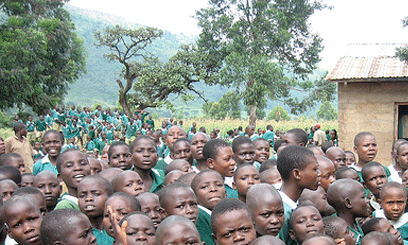NAIROBI, Kenya, July 19 – A report released by a local NGO on Tuesday indicates that most children graduating from public primary schools in Kenya do not have reading and counting skills.
Uwezo Kenya Country Director Dr John Mugo said in all public primary schools in the country, a third of pupils in standard three possess the competences for class two.
The report further revealed that one out of 10 children in class 8 could not do class two level mathematical divisions.
“Fifty percent of those in class four are unable to do class two work. There have children in class eight sitting now for the mock exams and are now waiting to sit for their national examination at the end of the year and nine percent of them cannot do class two divisions,” he said.
Absenteeism of teachers and pupils was one of the points the report highlighted as the major causes of weakening down the ability of children to acquire proper learning skills.
Dr Mugo attributed it to shortage of teachers following the introduction of Free Primary Education which he also blamed for watering down the standards of education due to student-teacher ratio.
“In many districts more than four out of 10 children miss school daily and on any single day 13 out of 100 teachers are not in school,” the report pointed out.
According to the report, there was urgent need to address the shortage of teachers with revelations that every primary school has a shortage of four teachers where one teacher is in charge of 52 children nationally.
The report indicated that counties with fewer teacher compared to the students have the worst learning levels.
But children also failed to go to school for various reasons such as their social and economic status especially those facing abject poverty in their homes.
Visual difficulties was also identified as a challenge that lead to poor learning skills with estimates that three out of 100 children seated in a classroom may be having unidentified poor eyesight.
“The learning levels of these children are 27 percent points lower than that of children with good eyesight. Children in North Eastern Province have higher incidence of poor eyesight that in any other province in Kenya,” he said.
According to Uwezo Regional Manager Sara Ruto, children were going to school in big numbers but their ability to gain essential learning skill was in question based on the findings of the report.
She expressed fears that there was rush to push children from primary to higher learning without checking their ability to grasp whatever is taught.
She appealed to teachers, parents and the government to countercheck the competence of school children to ensure that they are equipped with proficient learning skills and address the assumption that going to school meant they were properly educated.
She also urged the government to address the huge education gaps especially the shortage of teachers in schools and the cause of their absenteeism.
However she was pleased that most parents were concerned about the learning of their children after it emerged that 20 percent of teachers in every school were employed by parents.
“It is an indication that fathers and mothers care about their children’s education,” she said.
Investigations were done in 72,106 households in 124 districts and 3, 574 public primary schools were covered by the Uwezo – Kenya research.
One hundred and thirty four thousand children from six to 16 years old were interviewed during the research based on the competence of children in English, Kiswahili and Mathematics subjects.










































